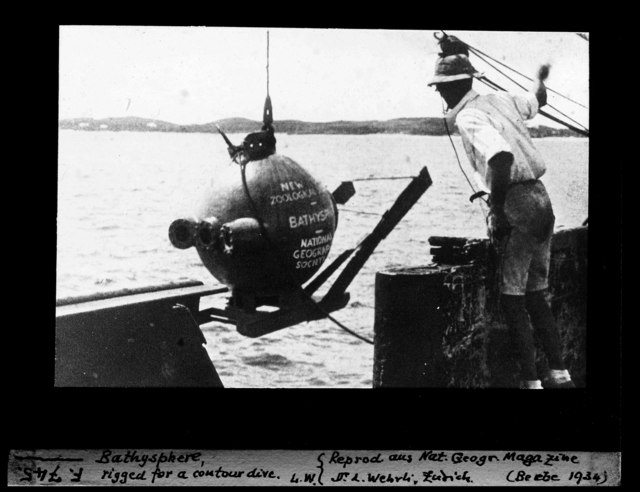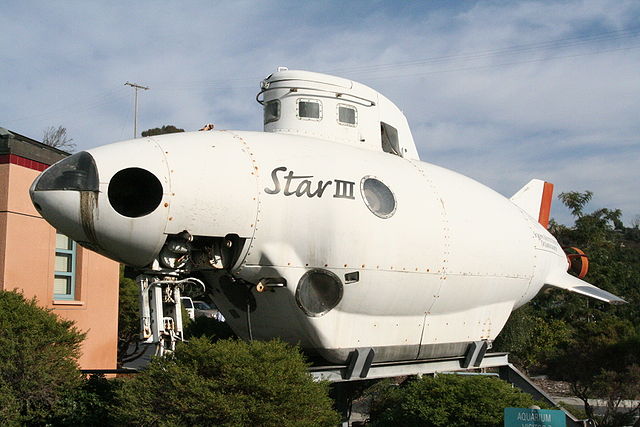The Bathysphere was a unique spherical deep-sea submersible which was unpowered and lowered into the ocean on a cable, and was used to conduct a series of dives off the coast of Bermuda from 1930 to 1934. The Bathysphere was designed in 1928 and 1929 by the American engineer Otis Barton, to be used by the naturalist William Beebe for studying undersea wildlife. Beebe and Barton conducted dives in the Bathysphere together, marking the first time that a marine biologist observed deep-sea animals in their native environment. Their dives set several consecutive world records for the deepest dive ever performed by a human. The record set by the deepest of these, to a depth of 3,028 ft (923 m) on August 15, 1934, lasted until it was broken by Barton in 1949 in a vessel called Benthoscope.
The Bathysphere on display at the National Geographic museum in 2009
The instruments aboard the Bathysphere
Bathysphere rigged for diving
A submersible is an underwater vehicle which needs to be transported and supported by a larger watercraft or platform. This distinguishes submersibles from submarines, which are self-supporting and capable of prolonged independent operation at sea.
Retired modern submersible Star III of Scripps Institution of Oceanography
Ictineu 3 is a crewed submersible with a large semi-spheric acrylic glass viewport and is capable of reaching depths of 1,200 m (3,900 ft).





